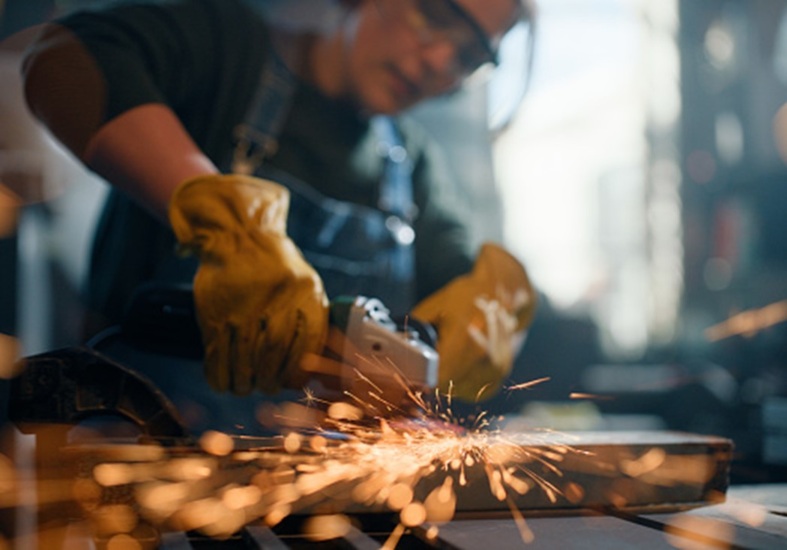Popular Types of Welding Processes Explained
Welding is more than just sparks and molten metal. It is an essential technical skill that serves as the backbone of various industries like construction, automotive, manufacturing, and even aerospace. Whether you’re just beginning your welding education or considering a career in this dynamic trade, understanding the most popular welding processes is a strong first step. At Pickens Technical College, we educate students on the basics of welding, as well as advanced practices. Explore this exciting field and how we help our Aurora, CO students succeed.

What to Know About Popular Welding Processes
Students enrolled in our welding technology training program are exposed to several welding processes. We strive to give each individual a well-rounded education that allows them to thrive in the workforce. Here’s an overview of some of the most common welding processes:
Shielded Metal Arc Welding (SMAW)
Shielded metal arc welding is one of the oldest and most versatile welding methods. It’s ideal for beginners, with its affordable setup and suitability for thick materials. Due to its versatility, this process is widely used in the construction, maintenance, and repair industries.
Gas Metal Arc Welding
This type of welding is popular thanks to its ease of use and speed. Gas metal arc welding utilizes a wire feeding system, making it perfect for projects that require long, continuous welds. This process is widely used in automotive repair, small-scale manufacturing, and home projects.
Gas Tungsten Arc Welding
Known for its precision, gas tungsten arc welding produces a high-quality weld. You’ll see it in industries such as aerospace and automotive, where clean, detailed welds are mandatory. This process is slower than others but makes for an exceptional result.
Flux-Cored Arc Welding
Flux-cored welding uses a self-shielding wire that allows it to perform well in outdoor settings. It’s commonly used for heavy-duty projects in the construction and shipbuilding industries. However, be ready to take additional safety precautions when doing this type of welding.
Submerged Arc Welding
Submerged arc welding is mainly used for industrial purposes, such as welding beams and pipes on a large scale. This machine-driven process is efficient and produces high-quality results. While this type of welding is helpful for a range of purposes, it isn’t suitable for thin materials.
Find the Perfect Career Opportunity in Welding
Welding technology programs open the door to a wide range of career paths. Despite rapid technological advancements, the demand for skilled welders remains steady across industries. Here’s a look at the opportunities waiting for you in this field:
- Construction—Welders are in high demand to create and repair structural frameworks for bridges, buildings, and pipelines.
- Manufacturing—From heavy machinery to mass-produced goods, manufacturing relies on welding at practically every level.
- Automotive and Aerospace—Precision welders contribute significantly to building safe cars and airplanes, as well as maintaining them over time.
- Oil and Gas—Welders play a vital role in repairing and assembling pipelines and drilling equipment.
- Specialized Welding Careers—Specializations can provide welders access to niche, high-paying jobs, such as underwater welding and fabrication for aerospace systems. With specialized roles typically earning higher wages, diversifying your skillset can pay off in the long run.
Why Technical Training Is Essential
Unlike many trades, welding relies on both skill and precision. A poorly executed weld can compromise safety, functionality, and overall project success. Here’s why technical education is critical for anyone considering this career:
- Building a Strong Foundation—Technical training programs like the ones at Pickens Technical College provide students with a structured way to learn the basics of welding. These programs teach you the types of metals, tools, and techniques required to perform various welding tasks, ensuring a sturdy foundation.
- Hands-On Practice—Theory alone isn’t enough in a field so reliant on hands-on skills. We offer lab-based instruction where students can practice welding in realistic environments.
- Staying Safe—Safety is paramount in welding trades. From handling hazardous chemicals to controlling equipment, advanced welding technology programs teach students how to create a safe working environment.
Taking the Next Step Toward Your Career
A career as a professional welder is on the horizon! At Pickens Technical College, we’re proud to guide students through our comprehensive, one-year program in the trade. After completing the program, students are ready to take the American Welding Society Plate Certification test and begin their lucrative careers. Reach out to our admissions team today for more information on how to enroll.